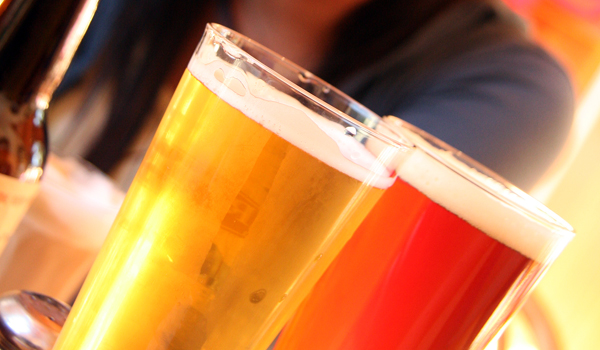How Booze Takes the Edge Off … for Rejected Flies

Chronically sex-deprived fruit flies will take refuge in booze, while just-mated flies are more likely to take a pass on the alcohol, new research suggests.
The alcoholic tendencies of the chronically rejected flies seem to be a result of decreased levels of a brain chemical called neuropeptide F (NPF), which researchers think plays a role in the fly's reward system.
When the fly does something that would be good for it evolutionarily, such as mating or eating food, an internal mechanism increases NPF levels. But NPF also can be turned up by outside factors, including alcohol. (Flies have no trouble finding alcohol, which is created by their favorite food: yeast on rotting fruit.)
"What we discovered was an interplay between internal rewards and external rewards," said study researcher Galit Shohat-Ophir of the Howard Hughes Medical Institute's Janelia Farm Research Campus, in Virginia. She did the research as a part of the Ulrike Heberlein's lab there.
"There's some kind of system in the brain, which we think NPF is regulating, that represents the level of internal reward. If there is perturbation in the level of NPF in the brain, there are behaviors that will return the levels back to normal," Shohat-Ophir told LiveScience.
Humans have a similar neuropeptide, called neuropeptide Y, in their brains. Researchers studying humans and other mammals have found a link between NPY and reward-related behaviors such as eating (and overeating).
NPY is known to inhibit alcohol consumption, and mutations in NPY have been seen in groups of alcoholics in correlational studies. Researchers have been working with NPY in mammals and NPF in flies to get a better understanding of alcoholism and to possibly design treatments for it.
Get the world’s most fascinating discoveries delivered straight to your inbox.
Fly dates and drinking
To see how sex impacts fly drinking, the researchers placed virgin male flies in a dish with either virgin females or with already-mated females, which unlike the virgins will reject the males.
The male flies were paired up three times a day for four days before they were given the opportunity to booze it up: They were offered regular food and food with 15 percent alcohol. Mated flies drank almost no alcohol, preferring the booze-free food, while rejected flies drank twice their body weight's worth. Virgin males that had never been paired up with a female in the lab were somewhere in the middle: moderate drinkers.
"From the experiments we've done, our hypothesis is that it [alcohol] affects the fly's brain in a way similar to how it affects ours," Shohat-Ophir said. "The alcohol increases their NPF levels."
Modulating NPF
After sex a male fly's NPF levels were high (their intrinsic reward for mating), so they didn't need alcohol to increase their NFP levels. When they failed at courting females, their NPF levels were low and they went in search of outside ways to activate their reward centers, by drinking.
Researchers can test in the lab how much of a reward the flies find alcohol by pairing it with a smell and seeing whether the flies remember it. When the experiment is run on a fly with normal NPF levels, the fly will hold onto this rewarding memory of the alcohol. But if conducted on a fly with heightened levels of NPF, the alcohol will no longer be perceived as rewarding.
"This explains why mated flies in our system, which we think have higher NPF, don't consume alcohol," Shohat-Ophir said.
The study was published today (March 15) in the journal Science.
You can follow LiveScience staff writer Jennifer Welsh on Twitter @microbelover. Follow LiveScience for the latest in science news and discoveries on Twitter @livescience and on Facebook.
Jennifer Welsh is a Connecticut-based science writer and editor and a regular contributor to Live Science. She also has several years of bench work in cancer research and anti-viral drug discovery under her belt. She has previously written for Science News, VerywellHealth, The Scientist, Discover Magazine, WIRED Science, and Business Insider.

